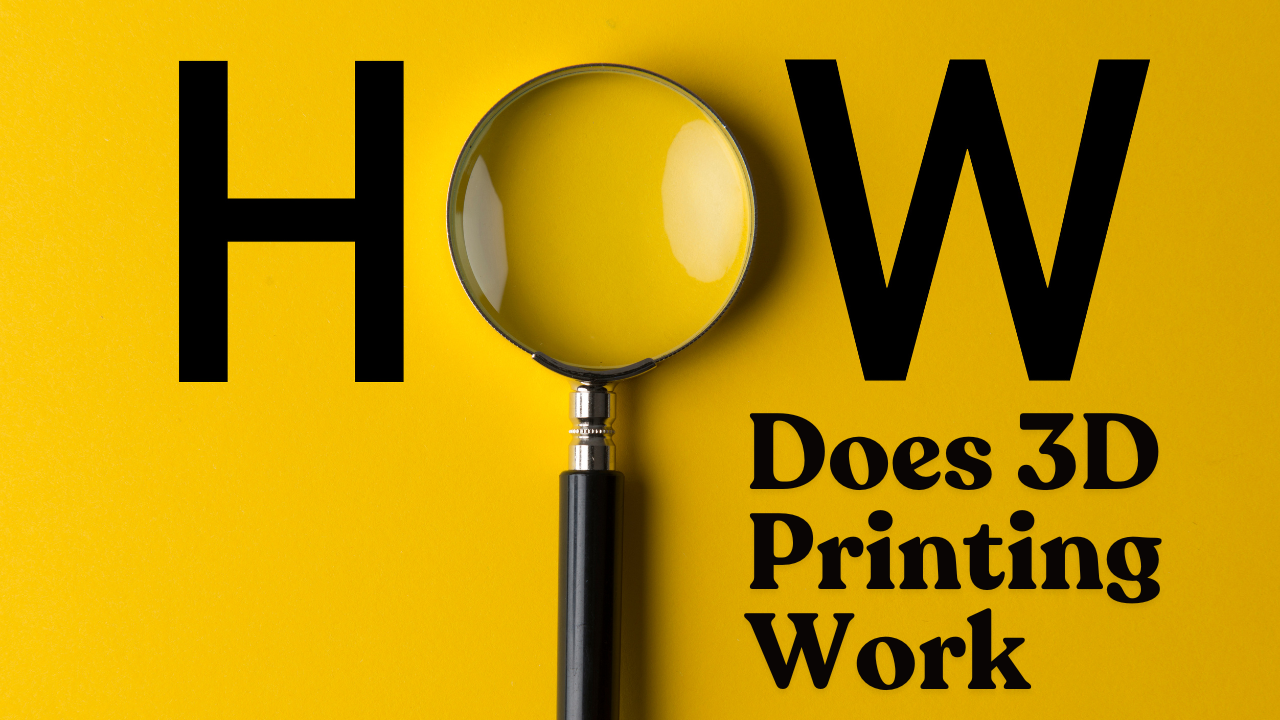How Does 3D Printing Work? A Beginner’s Guide
3D printing is an amazing technology that allows you to create real, physical objects from digital designs. It has revolutionized industries like manufacturing, medicine, and even home crafting. But how does it actually work? In this guide, we’ll break it down in simple terms so you can understand the magic behind 3D printing.
What is 3D Printing?
3D printing, also known as additive manufacturing, is a process where a three-dimensional object is created layer by layer using a special material. Unlike traditional manufacturing, which cuts or molds objects, 3D printing builds them up from scratch using a digital design.
The Basic Steps of 3D Printing
The process of 3D printing can be broken down into five main steps:
1. Creating a 3D Model
Everything starts with a digital 3D model. This is a virtual design of the object you want to print, created using software like:
- Tinkercad (great for beginners)
- Fusion 360 (for advanced users)
- Blender (popular for artistic models)
If designing from scratch sounds difficult, don’t worry! You can also download ready-made models from websites like Thingiverse or MyMiniFactory.
2. Slicing the Model
Before printing, the 3D model needs to be converted into instructions that the printer can understand. This is done using slicing software like Cura or PrusaSlicer.
Slicing software:
- Breaks down the model into thousands of thin layers.
- Generates a G-code file, which tells the printer how to move and where to deposit material.
3. Preparing the 3D Printer
Once you have your sliced file, it’s time to set up the printer:
- Load the Filament: Filament is the material used for printing, typically PLA, ABS, or PETG.
- Level the Print Bed: Ensures the first layer sticks properly.
- Preheat the Printer: Different materials require different temperatures.
4. Printing the Object
Now the fun part! The 3D printer starts printing by depositing layers of material one at a time. The print head moves precisely according to the instructions in the G-code file.
- Fused Deposition Modeling (FDM): The most common method where plastic filament is melted and layered.
- Resin Printing (SLA/DLP): Uses liquid resin and UV light for highly detailed prints.
5. Post-Processing the Print
Once printing is done, some finishing touches may be needed:
- Removing Supports: If the model had overhanging parts, supports might need to be removed.
- Sanding & Polishing: Smooths rough edges for a professional look.
- Painting & Assembly: Some prints require extra color or combining multiple parts.
Types of 3D Printing Technologies
While FDM is the most common, there are other types of 3D printing technologies used for different purposes:
1. Fused Deposition Modeling (FDM)
- Uses plastic filament
- Affordable and widely available
- Great for hobbyists and beginners
2. Stereolithography (SLA)
- Uses liquid resin and UV light
- Produces highly detailed prints
- Best for jewelry, dental models, and prototypes
3. Selective Laser Sintering (SLS)
- Uses powder instead of filament
- No support structures needed
- Ideal for industrial applications
Common Materials Used in 3D Printing
Different projects require different materials. Here are the most common ones:
1. PLA (Polylactic Acid)
- Easy to print and eco-friendly
- Great for beginners and general use
2. ABS (Acrylonitrile Butadiene Styrene)
- Strong and durable
- Requires a heated bed to prevent warping
3. PETG (Polyethylene Terephthalate Glycol)
- A balance between strength and flexibility
- Great for functional parts
4. Resin (For SLA Printing)
- Produces smooth and detailed prints
- Used for jewelry, miniatures, and dental models
Challenges and Troubleshooting in 3D Printing
While 3D printing is amazing, it comes with its own challenges. Here are some common issues and how to fix them:
- Print not sticking to the bed? Try using a heated bed or applying a glue stick.
- Layers not aligning properly? Check that the print bed is level and the printer is calibrated.
- Filament jams? Clean the nozzle and make sure the filament feeds smoothly.
- Print warping? Use an enclosure or adjust bed temperature settings.
Future of 3D Printing
The future of 3D printing is exciting! Advancements in materials, speed, and applications mean we can expect even more amazing things:
- Medical applications: Printing prosthetics and even human tissues.
- Construction: 3D printing houses and buildings.
- Food printing: Creating custom meals with 3D food printers.
Final Thoughts
3D printing is a revolutionary technology that allows anyone to turn ideas into real objects. Whether you’re a beginner experimenting with simple designs or an advanced user creating functional prototypes, the possibilities are endless. By understanding the basics, choosing the right printer, and practicing, you’ll be on your way to mastering 3D printing in no time!
So, are you ready to start your 3D printing journey? Happy printing!

